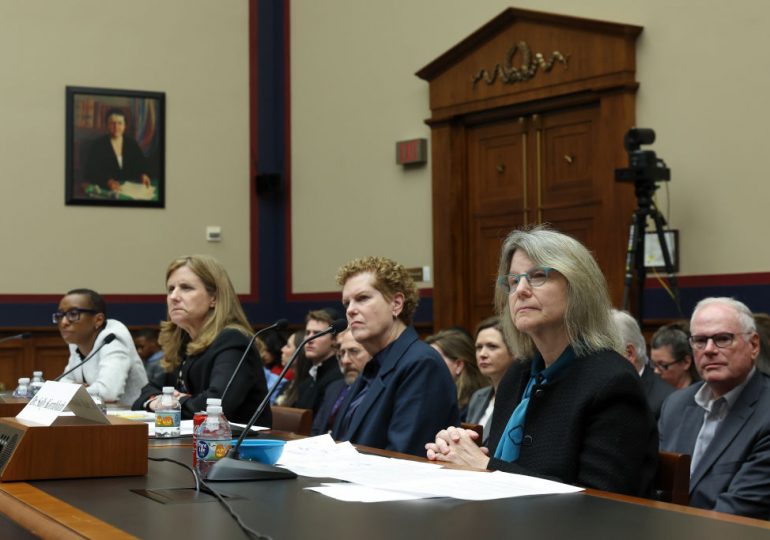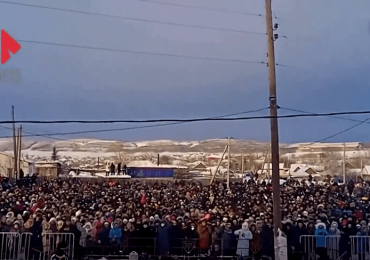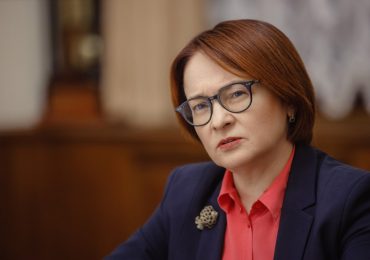The debate over what speech should be permitted on university campuses has reached a fever pitch after calamitous congressional hearings on antisemitism, in which the presidents of Harvard, Penn, and MIT refused to unequivocally state that calling for genocide of Jews would be impermissible at their schools. The ensuing uproar prompted Penn’s president M. Elizabeth Magill to resign.
[time-brightcove not-tgx=”true”]
Shocking though they were to many Americans, the presidents’ stiff, lawyerly answers reflected how universities have regulated most speech. They’ve treated campuses as marketplaces of ideas, in which the administration is a neutral broker, and members of the campus community pick winners and losers. The university defends the market and only polices harassing speech targeted at individual community members. Otherwise, it doesn’t usually determine what’s tolerable or defensible — the market does. Unwanted or offensive speech, administrators hope, will die a natural death.
In the wake of these hearings, however, universities have another option. They can embrace an older understanding of speech in which the values of the university community play a greater role in shaping what is permissible and welcome. This was the conception of free speech employed at Brown University in 1990, when, for the first time, a modern university expelled a student for a violation of a “hate speech code.” The case reminds us how important it is to affirm community principles alongside — and even over — market mentalities.
In 1989, Brown, like many peer institutions, tightened its rules about “hate speech” to stanch a waterfall of racism. Feverish worries about rising crime rates in Providence had sparked rumors that white students were defensively forming a Ku Klux Klan Klavern on campus and had appealed to the national KKK for protection. In April, one of Brown’s dorms was papered with white supremacist material; “Keep White Supremacy Alive!” one flyer read, “Join the Brown chapter of the KKK today!”
Read More: Ivy League Presidents Try to Clarify Stances on Antisemitism After Backlash to Testimony
The incident presented an immediate challenge for the university’s newly arrived president, Vartan Gregorian, a passionate defender of the idealized university community. After the defacement of the dorm, Gregorian told an angry crowd of faculty and students that racism had no place at Brown. Despite this declaration, things got worse. As the semester wound down, several Black students received threatening phone calls laced with racial invective. Gregorian responded by threatening “to prosecute vigorously and to expel immediately” anyone who “attempted to inject or promote racism.”
The fall of 1989 was no better. During move in, a Black student carrying boxes with her parents reported hearing an intimidating voice call out racial epithets. Two white students claimed to have been jumped by young Black men. Brown’s student newspaper routinely described roving Black gangs on campus, mugging and assaulting white students. University security implemented an ID check for Black men on campus who were “acting suspiciously.” On Oct. 20, things reached a high pitch when Brown cancelled a funk night sponsored by a Black fraternity. University officials worried about the potential for racial violence.
Gregorian moved decisively to defuse a racial bomb. A newcomer to Brown, he understood that respectful engagement and intellectual debate required the enactment of new social rules. This was both personal and political. An Armenian born in Iran and an immigrant to the U.S., he felt that he had been denied the presidency at Penn because of his foreign background. He also listened to the campus community, which urged him to put antiracism at the core of these new rules. New student movements like the Coalition Against Racism and Homophobia emerged to push in this direction. The group titled its list of demands “Notes on the Brown University Conscience.” By all accounts, Gregorian took the students seriously, electing to make anti-racism and anti-harassment cornerstones of his leadership.
Doing so, he walked a very fine line. When the local NAACP pressured an art history professor to remove Birth of a Nation from his syllabus, Gregorian refused to intervene, leaving the faculty member exposed. When the professor cancelled the showing, Gregorian deflected criticism of his inaction, arguing that he was bound “to respect what a professor assigns or if a professor cancels something.”
This episode fueled concerns about his commitments to academic freedom. The editors of the student newspaper pleaded for more speech, not less, and hoped that Brown might “condemn racism — but without punishing words that cause people to take offense.”
But Gregorian conducted dialogues with campus constituencies and used them, along with his own moral compass, to reshape the code of conduct in the fall of 1989. It stipulated that no member of the campus community could subject “another person, group or class of persons, to inappropriate, abusive, threatening or demeaning actions based on race, religion, gender, handicap, ethnicity, national origin or sexual orientation.” Some speech, under these rules, was cruel enough to be action, roughly akin to the use of “fighting words.” A person who spoke hatefully in front of classmates or on campus would be disciplined.
Gregorian hoped the new code might empower administrators and disciplinary boards to constrain racist speech within the campus walls and arrest any further splintering of the community. He also hoped it might signal his own principles.
An incident on the night of Oct. 18, 1990, put the new code to the test. A junior named Douglas Hann, drunk and celebrating his birthday, walked into a courtyard nestled in the first-year dorms at Brown, and began shouting anti-Black racial obscenities. After a freshman called out to ask for quiet, Hann responded with a sexualized slur for gay men. Then, noting an Israeli flag in the student’s window, he added an antisemitic expression. A small group of students confronted Hann and ejected him from the quad. Angrily, he told a young Black woman: “My parents own you people.”
This wasn’t Hann’s first offense. A year earlier, he had used the same racial epithet, accosting a Black student at a fraternity function. The university had compelled him to attend a race-relations workshop along with counseling for alcohol consumption.
Once Hann was identified as the guilty party in the courtyard incident, John Kuprevich, Director of Brown Police and Security, told the student newspaper that “the alleged remarks” were not “a criminal violation under state law because they were not originally directed at anyone.”
Read More: Calling Out Terrorism Shouldn’t Be an Issue of Free Speech
Gregorian, however, saw Hann’s behavior as a straightforward violation of the anti-harassment provision in the revised code of conduct. When questioned by a student interviewer about Hann’s First Amendment rights, the president asked, “what about the rights of people who have been harassed, the people woken up at 2:00am?” He reminded the interviewer that the infamous 1978 Nazi march in Skokie, Ill., had been appropriately permitted and was staged in public space, so that people had to voluntarily attend. Hann, by contrast, had strayed far from the main green, long a site for protests. Without any invitation, he had spoiled the intimacies of a quiet, interior greenspace, his voice carrying into the privacy of dorm rooms and distinguishing the intrusion from protected political speech shared in the proverbial public square.
When the Undergraduate Disciplinary Council expelled Hann, Gregorian “affirmed the decision,” despite the attendant legal and political risks. Expulsion was permanent and irrevocable, he knew. Nevertheless, the university’s commitment to justice and community required such an outcome. It would also reassure the campus that its leader could tell the difference between right and wrong and would take a stand to protect the community. For this affirmation, Gregorian was pilloried in the national press, accused of fascism and political correctness. The Harvard Crimson editorialized that “even hate speech should be free.”
The decision was an outlier, and in the decades since, universities have only become more protective of any free speech, no matter how offensive. They recognize the difficulty of drawing lines, and the political and legal risks involved in censoring speech, which smacks of “political correctness.”
One ironic consequence, though, has been the proliferation of student protests whenever a divisive figure comes to campus or broaches a controversial topic, and a scramble afterwards to enact more regulations of protest — even as content becomes increasingly deregulated. Universities dictate the provision of speech, not the substance. Consequently, they have struggled through a decade of brutal campus protests, confronting a free speech marketplace that often protects the words of white supremacists. Universities’ devotion to a near absolutist position on free speech has required sacrificing opportunities to stand, as Gregorian did with admirable courage, for what is, once more, right and just.
The expulsion of Douglas Hann wasn’t the end of the story. Gregorian’s tenure at Brown was pockmarked by major melodramas and protests, and the crises he confronted tied to racism, sexism, poverty, and more were never completely resolved. Still, the race war feared by students, faculty, and administrators in 1989 never materialized, in part because Gregorian acted robustly in defense of values defined by students, faculty, and staff.
He sought to champion the campus as a community walled off, if imperfectly, from the baser, vulgar realities of American life. The free and fair exchange of ideas, as he saw it, demanded a principled intervention to ensure that hateful speech could not be normalized as another commodity adrift in the marketplace, as valuable as any other.
Matthew Guterl is the L. Herbert Ballou university professor of Africana studies & American studies at Brown University. Research for this essay was conducted with students in the fall 2019 and spring 2023 seminars on “Black Student Protest.” Made by History takes readers beyond the headlines with articles written and edited by professional historians. Learn more about Made by History at TIME here.
Leave a comment
















